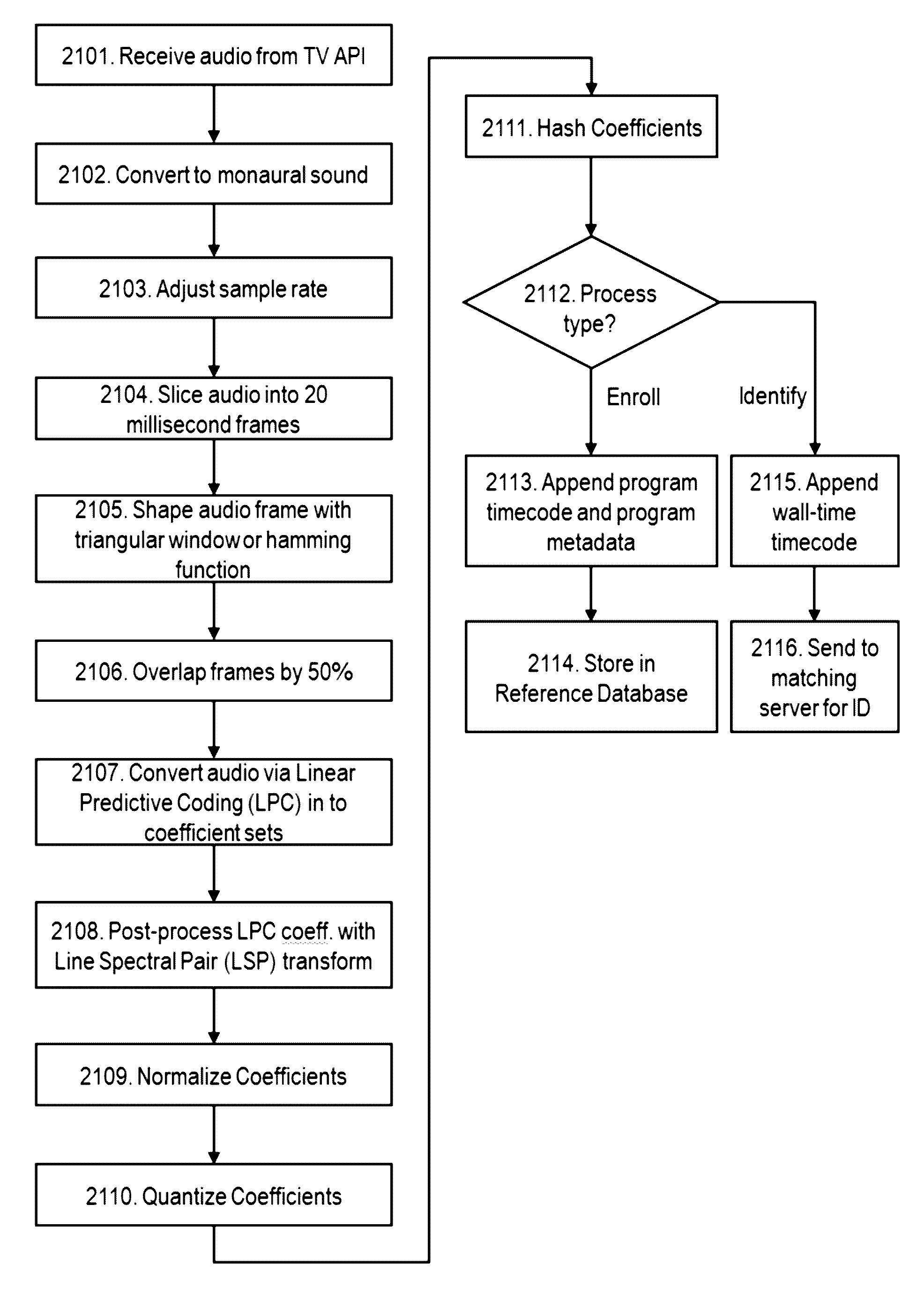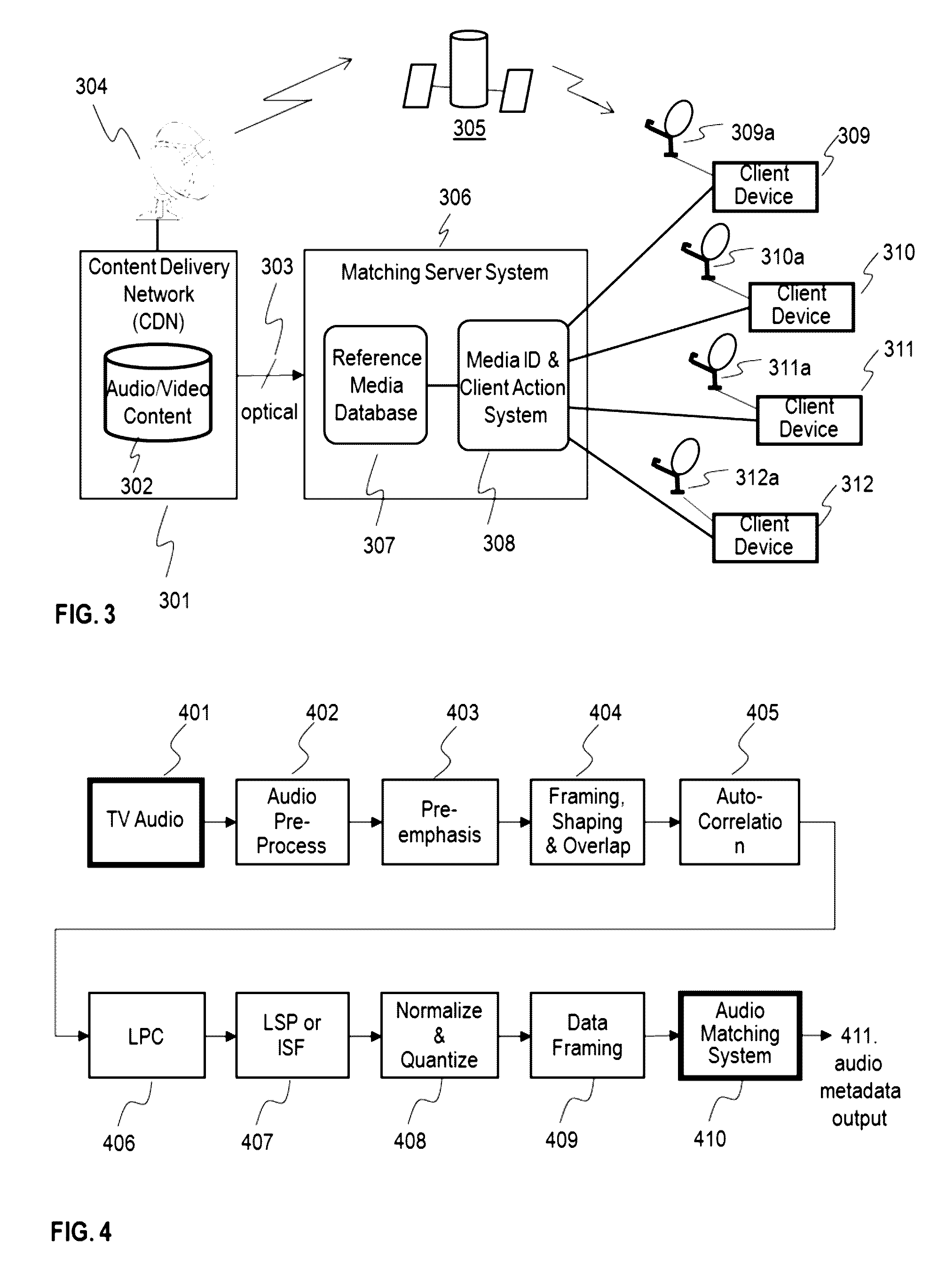System and method for continuous media segment identification
a technology of segment identification and media, applied in the field of media identification client server system, can solve the problems of identifying video, video identification process failing to match the unknown video sampled from the set, and affecting the identification effect of video
- Summary
- Abstract
- Description
- Claims
- Application Information
AI Technical Summary
Benefits of technology
Problems solved by technology
Method used
Image
Examples
Embodiment Construction
[0051]In one embodiment, as illustrated in FIG. 2, the system identifies audio 203b and video 203a information from television programming by means of a client application 203 of the invention operating within the processor means of a cable TV, satellite or Internet-connected set-top box or within the processor means of a smart TV. In an example embodiment, said client application process typically operates on the audio 211 and / or video 209 information just prior to said information playing to the speakers and / or display of said television device. Said audio and / or video information is processed by the invention to produce a highly-compressed, continuous stream of frame representations of the respective audio and / or video signal by means of ACR Client 208. Said frame representations are transmitted 203a and / or 203b via a network, typically the Internet, to a server means 202 of the invention for identification. Said frame representations are of the form of select averaged pixel valu...
PUM
 Login to View More
Login to View More Abstract
Description
Claims
Application Information
 Login to View More
Login to View More - R&D
- Intellectual Property
- Life Sciences
- Materials
- Tech Scout
- Unparalleled Data Quality
- Higher Quality Content
- 60% Fewer Hallucinations
Browse by: Latest US Patents, China's latest patents, Technical Efficacy Thesaurus, Application Domain, Technology Topic, Popular Technical Reports.
© 2025 PatSnap. All rights reserved.Legal|Privacy policy|Modern Slavery Act Transparency Statement|Sitemap|About US| Contact US: help@patsnap.com



